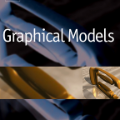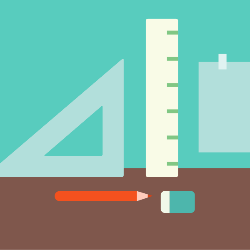Limbless robots have the potential to maneuver through cluttered environments that conventional robots cannot traverse. As illustrated in their biological counterparts such as snakes and nematodes, limbless locomotors can benefit from interactions with obstacles, yet such obstacle-aided locomotion (OAL) requires properly coordinated high-level self-deformation patterns (gait templates) as well as low-level body adaptation to environments. Most prior work on OAL utilized stereotyped traveling-wave gait templates and relied on local body deformations (e.g., passive body mechanics or decentralized controller parameter adaptation based on force feedback) for obstacle navigation, while gait template design for OAL remains less studied. In this paper, we explore novel gait templates for OAL based on tools derived from geometric mechanics (GM), which thus far has been limited to homogeneous environments. Here, we expand the scope of GM to obstacle-rich environments. Specifically, we establish a model that maps the presence of an obstacle to directional constraints in optimization. In doing so, we identify novel gait templates suitable for sparsely and densely distributed obstacle-rich environments respectively. Open-loop robophysical experiments verify the effectiveness of our identified OAL gaits in obstacle-rich environments. We posit that when such OAL gait templates are augmented with appropriate sensing and feedback controls, limbless locomotors will gain robust function in obstacle rich environments.
翻译:无纸机器人有可能通过传统机器人无法穿越的杂乱环境进行操控。正如其生物对应物,如蛇和线虫等,无足轻重的无足轻重的机器人可以受益于与障碍的相互作用,然而,这种障碍辅助的移动(OAL)需要经过适当协调的高层次自我变形模式(盖特模板)以及低层次的身体适应环境。大多数以前关于OAL的工作都利用了定型旅行波步步样板,并依靠当地身体畸形(例如被动身体机械或基于力量反馈的分散控制器参数调整)来进行障碍导航,而OAL的游戏模板设计研究仍然较少。在本文中,我们探索基于地貌机械(GM)所衍生工具的OAL新版格调样板(OAL),迄今为止,这些工具仅限于同质环境。在这里,我们将GM的范围扩大到障碍环境,具体地,我们建立了一个模型,用来绘制在优化方向障碍力限制方面存在的障碍。我们这样做的时候,我们找到了适合在深度和密集分布的阻力环境中使用的新版模样模板。我们用OAL的硬质的硬质模型测试,在坚固的机能的机能的机能的机能功能上,可以加强我们的实验室的机能的功能。




